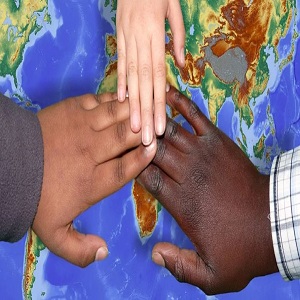Important things to Know about the White Australia Policy
 The White Australia policy is a collective term that describes some historical policies that were formulated in the 20th century to prohibit non-Europeans like Pacific Islanders and Asians from moving to Australia. On the other hand, these policies favoured immigrants from a certain group of countries.
The White Australia policy is a collective term that describes some historical policies that were formulated in the 20th century to prohibit non-Europeans like Pacific Islanders and Asians from moving to Australia. On the other hand, these policies favoured immigrants from a certain group of countries.
The purpose of the White Australia policy was to keep non-Europeans from entering Australia to keep it as ‘white and British’ as possible.
However, because of the hostility and discrimination that followed its implementation, the White Australian policy was abolished by different Australian governments over 25 years.
History of the White Australia Policy
The origin of the White Australia policy was in the 19th century when white miners began to resent the industrious and resilient diggers of Chinese origin. This resentment eventually led to a violent outcome in parts of Victoria and New South Wales. The government at the time will then go on to place restrictions on immigration from China to Australia.
The next victims were the Pacific Islanders who lived in Queensland and were referred to as “Kanakas”. The Australian factory workers in the South became hostile to the Kanakas and opposed immigration policies that put their jobs at risk of being taken by the Kanakas. They argued that the non-whites will start to take on their jobs. They assumed that the Kanakas will start to work for lessand become the most sought-after for employment. They also assumed a possible exclusion of the colony from the impending Federation if the trade didn’t end.
Meanwhile, politicians of the day had vehemently said that Asians and non-whites won’t have access to the Australia that they hoped for.
In 1901, a new government came into power and passed the Immigration Restriction Act into law on December 3, 1901. The goal of the act was to restrict immigration and make provisions for prohibited immigrants to be removed from Australia.
The act also prohibited the immigration of prostitutes, criminals, mentally ill persons, and persons who had contagious or infectious diseases.
This policy and its implementation were widely applauded across the community.Visit Australians Together to learn more about some of the events that mark the Australian history.
How and When It Was Abolished
In the heat of the Second World War, many refugees who were not white immigrated to Australia. Many of them left on their own when the war ended. But some had married Australian citizens and stayed back in the country with their new families.
The immigration minister at the time, Arthur Calwell, purposed to deport such people but was quickly met with a strong protest. Governments after began to dismantle the White Australian policy.
In 1949, Immigration Minister Harold Holt allowed up to 800 refugees of non-European and war brides from Japan to stay and be admitted. This became the first step to dismantling the discriminatory immigration policy.
The year 1957 saw a major step in the abolishment of the White Australian policy when residents who were non-Europeans and had lived in the country for up to 15 years were granted the rights and privileges of an Australian citizen.
What’s more? A revised Immigration Act in 1958 created simpler criteria for immigration and eliminated the questionable and biased dictation test which many intending immigrants failed before that time.
In 1966, the Minister at the time, Hubert Opperman made an announcement stating that applicants will be considered based on how well they can settle and integrate, as well as any qualifications they may have that will be potentially useful to the country.
More so, like the European residents, non-European residents who had lived in the country for up to 5 years could become citizens and permanent residents.
The years that followed saw more landmark changes. These changes favoured more non-European immigrants. And by 1978, so much had been done including a more solid and consistent method to selecting migrants without racial discrimination while emphasizing the positive benefits of their immigration to the country. Visit https://www.europarl.europa.eu/meetdocs/2009_2014/documents/danz/dv/0220_13_1/0220_13_1en.pdf to dig further into how the policy was abolished.
Australian Immigration Today
The current Australian Migration policy accepts applicants from countries all over the world who would like to immigrate to Australia irrespective of their race, religion, language, or culture as long as they meet other eligibility requirements specified in the immigration laws.
The 2006 Australian census revealed that about 45% of residents in Australia were from foreign ancestry – they were either born abroad or have one parent who was born abroad. And by the end of 2010, Australia had received approximately 6.5 million people from different continents since the Second World War ended.
Today, there are severalancestries, hundreds of religions being practiced and over 200 languages other than the indigenous languages being spoken in Australia. Some of such languages include Italian, Cantonese, Mandarin, and Arabic.
The current immigration programme also features two sections – a family and skilled immigrants programme and a programme for asylum seekers and refugees. You can click here to learn more about the legacies.
Conclusion
Australia boasts increasingly rich cultural and ethnic diversity– a feat that seemed out of reach in the 20th century because of the White Australia policy.
Although the genesis of the policy began after clashes with Chinese and Pacific Islanders residents in Australia, the policy was aimed at keeping non-Europeans out of Australia to make it ‘white’. It was essentially biased to immigration applicants who were of a different race and ethnicity.
Thanks to the gradual and final abolishment of the policy, the Australian immigration laws have become more welcoming and open to non-Europeans over the years.
Applicants are no longer selected based on their ethnicity, language, or culture but based on non-discriminatory eligibility criteria like how well the applicant can integrate into the society as well as the positive impacts that they stand to have on different aspects of the country.
The government acquiesces that the religious, cultural, and ethnic diversity that the country enjoys today has increased not just its social wealth but also its economic wealth.

